|
|
Post by Paul Barker on Aug 20, 2014 14:28:45 GMT
I seem to recall reading that the first 12 or so watts were class A and thereafter class A/B ? Depends on the design. To do SS Class A in high powers requires massive heatsinking though, the amp will produce huge amounts of heat. Think massive Krell monblocks and the like. Yes and this is where valves benefit they are their own heatsink on the whole though there are those which need chimneys and forced air, and those that are cooled in oil tanks. The downside against high powered class a silicon is the heater power required for valves, oh and the lifespan of the valve under these conditions. My friend who serviced the PYE relay stations which had parallel push pull 212 amplifiers the size of a Vauxhall combo van (and about the same wight) said the 212's lasted just a few weeks. They were on full disipation 24 / 7 relaying broadcast radio on a 100v line system around Scarborough in the 1960's. Not just one relay station, there were a few of them. I think there were other parts of the country with the same system. 212's were also used like this on the WWII version of Ark Royal as a PA system for the huge deck. |
|
|
|
Post by ChrisB on Sept 10, 2014 20:03:02 GMT
Eico - Rarely seen in the UKEico (Electronic Instrument Corp) were a New York company & they paralleled Heathkit and, in a way Radford too, in that they started out building lab & test gear & branched out into hi-fi later, selling both kit & built components. I don't think very much of it ended up over here, though. Eico HF-81 (stereo)  One of the first times I ever got really interested in hifi when I was a kid was seeing and hearing a system incorporating an Eico HF-81. It was fairly old even then but I've wanted to own one ever since! It was (I think) a Williamson based circuit giving 14 watt using EL84's. It's become a bit of a cult item of late in the US & I was able to hear one again a few years ago on a visit over there. My impression was that it was every bit as good as it's reputation may have you believe. I think I'm right in saying that there was an HF-86 that had the same power circuit but just came as an open chassis power amp. Another model, pictured below - the HF-12, was similar, but mono & with a slightly less sophisticated pre-amp circuit. There was also a power amp version of this, the HF-14 which came on an open chassis like the HF-86. There was also a range of higher powered amps, some of which I've had the pleasure of spending some short periods with, although I did slightly prefer these little units' sweeter presentation. Eico HF-12 (mono)

|
|
|
|
Post by MartinT on Sept 15, 2014 6:02:41 GMT
The Dynavector DV3000 Gold monoblock valve power amps are so rare that I can't even find a photo of them, so here is the matching preamp.
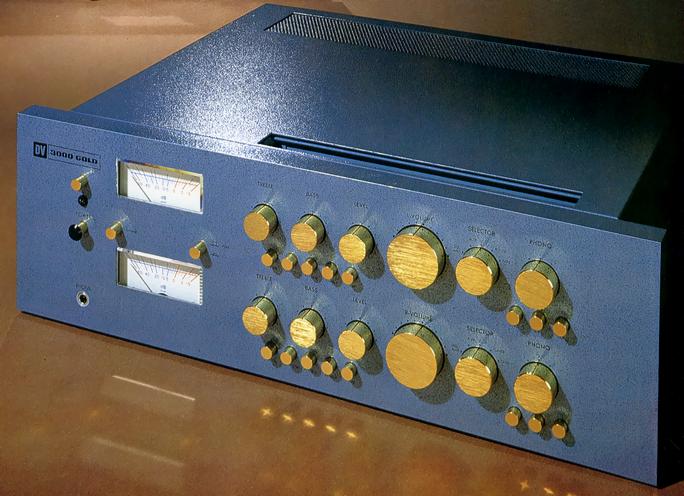
I am extremely lucky in that a friend of mine had one of the few pairs ever made and I ran them in my system for a week many years ago. |
|
|
|
Post by ChrisB on Sept 19, 2014 23:16:59 GMT
That's a lovely thing Martin. I'd like to hear a Dynavector amp system sometime.
|
|
|
|
Post by ChrisB on Sept 19, 2014 23:24:29 GMT
OK, here's a strange one that I'm not sure many will have seen before. It's an integrated amp - SAE-3022. Very odd! 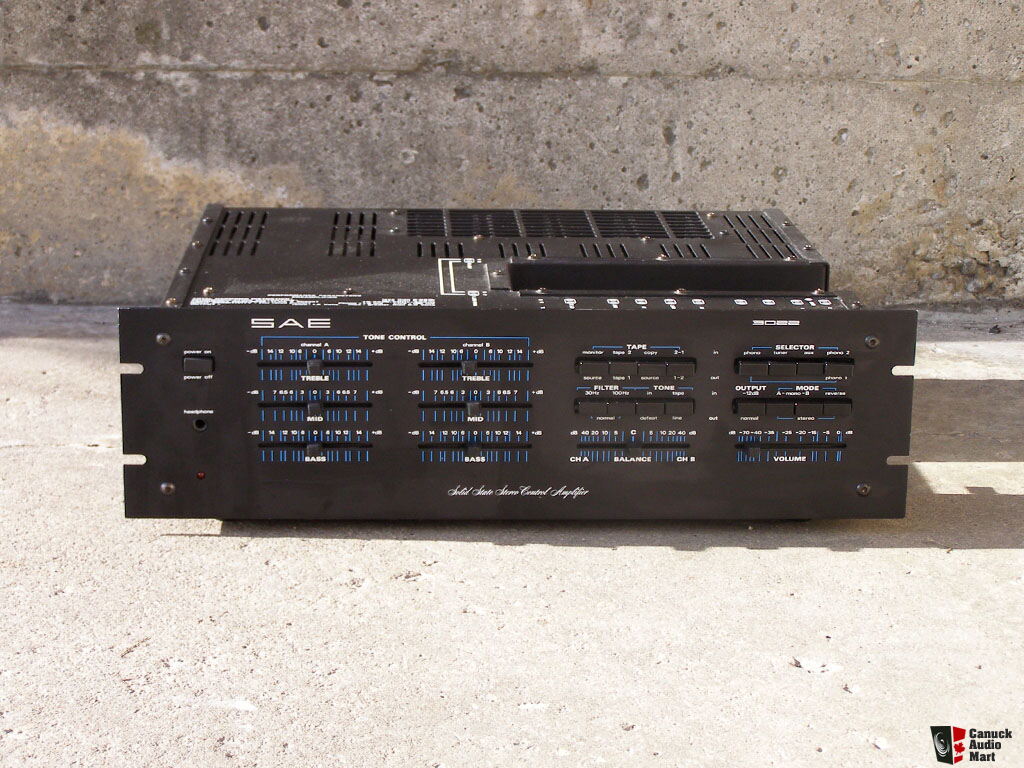 How do you make an integrated amp? Easy! Take a pre amp from your existing range. Take a power amp and put em in one box.  No, not like that, you idiot! Well.........actually........... Why on earth not?  |
|
|
|
Post by ChrisB on Sept 21, 2014 10:59:38 GMT
Sound Sales Tri-Channel amplifiers. Sound Sales made a few of these multi channel amp designs, going back to pre-stereo days of the late 1930s and into the 60s. Three amps on one chassis, specifically for tri-amping. Cost a proper fortune! 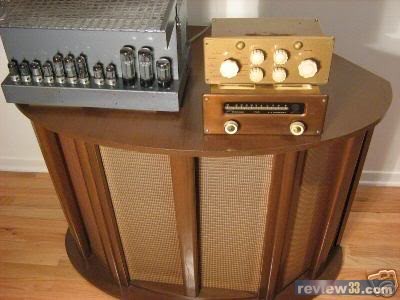 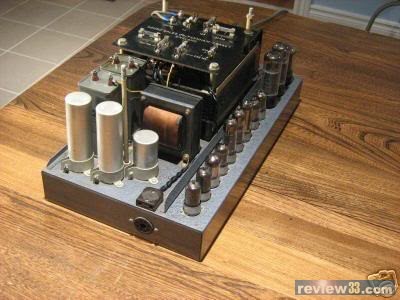 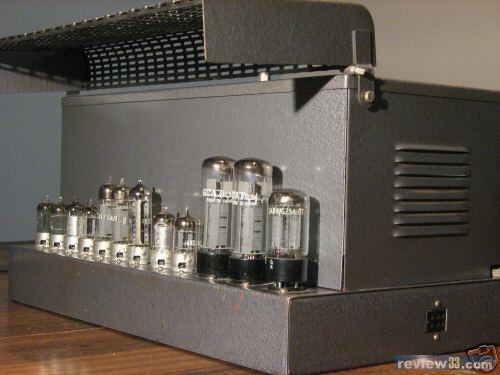 |
|
|
|
Post by ChrisB on Sept 24, 2014 6:13:16 GMT
I don't expect that valve cover will rattle at at. Nope, not one little bit!
|
|
|
|
Post by MartinT on Sept 24, 2014 7:04:25 GMT
You don't see many Carver M500T magnetic field amplifiers around, especially in the UK. I've often been tempted to take a punt on one, just to see whether that circuit is of interest.

|
|
|
|
Post by ChrisB on Sept 24, 2014 7:30:13 GMT
I love the story about the Carver Transfer Function Amps Carver challenged two audio magazines to select an amplifier for him to test from any maker and price level & he would then make small modifications to one of his own designs and the staff of the magazine would be subjected to a listening test where they would try to distinguish one amp from the other. Carver's amp was quite cheap & he was willing to put it up against anything. The first magazine to take him up on his challenge was The Audio Critic and they offered a pair of Mark Levinson ML2's. He was successful in matching the sound and no differences could be discerned. Next up was Stereophile magazine, who supplied the Conrad Johnson Premier 5, a $12K power amp and added the condition that Carver reproduce it's sound within 48 hours. Stereophile were extremely confident that they could easily reveal the difference between the two amps, especially as the testing was to take place in their own premises & with their own ancilliary equipment. "After the second day of listening to his final design, we threw in the towel and conceded Bob the bout."
"We had thrown some of the most revealing tests that we know of at both amps, and they came through identically. Even on the subliminal level--the level at which you gradually get the feeling that one amplifier is more "comfortable" than another--we failed to sense a difference between the two amps."
"We wanted Bob to fail. We wanted to hear a difference. Among other things, it would have reassured us that our ears really are among the best in the business."
"According to the rules of the game, Bob had won."
"The implications of all this are disquieting, to say the least. If, after only four days of work, it is possible for someone--design genius or not--to make a $700 amplifier sound exactly like a state-of-the-art amplifier costing many times as much, what does that say for the cost-effectiveness of the latter?"
Carver later marketed the $600-700 M-1.5t which was supposed to sound like the amps in the challenge and was compared to $4K – 5K models. Later, he produced the Silver Seven, a hugely expensive (10's of thousands of dollars) valve design. In order to prove how he could still model amps, he modelled the Silver Seven with a £600 model, the M-4t Magnetic Field amp. All were, apparently hugely unreliable and the modelled amps needed constant adjustments to keep them sounding like the amps they were supposed to be cloning. Then there was an exchange of lawsuits between him & Stereophile, where he claimed they were discrediting him, despite admitting to losing the challenge & they sued for his unauthorised use of their copyright. I seem to remember loving the looks of the both Silver Seven (especially it's power supply!) & the M-4t, from photos – never saw them in the flesh. 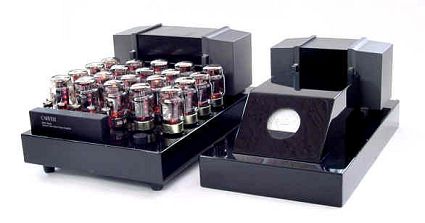 |
|
|
|
Post by ChrisB on Oct 27, 2014 20:55:29 GMT
Trio / Kenwood Supreme 20 Cartridge - 1969For quite a while, I've had a mild inquisitive interest in the Supreme series that Kenwood made at the back end of a long time ago. The units they produced incorporated quite a few interesting ideas and concepts and this one, I thought, must have been rather unusual for the time.  I call it the 'dustbin on a stick'. As far as I can tell, the cantilever had a pair of screens mounted in a 'V' formation on it and upon these were a pair of photo-electric cells. Also within the headshell were a pair of lamps which shone through a slit and the screens and then onto the cells. As the stylus tracked the groove, the cantilever moved the screen and caused variations in the pattern of light falling onto the cells. Part of the system was a power supply for the bulbs and the unit also had the ability to amplify the cartridge output to line level. There was a balance control round the back & a bypass switch on the front which allowed another conventional cartridge to be connected. The cartridge was mounted into an integral headshell unit and was quite heavy, often needing a beefy counterweight. I understand that it was made for Trio by Ikeda and that it cost a rather lively £78 (inc. tax) in 1969, which relates to something like £1088 nowadays. I found an old HFN review of the Trio and it referred to another Japanese company doing something with photo electric cells - it may have been Toshiba. I also read that Decca may have intervened and put a stop to the Trio because of an existing patent that they held.
|
|
|
|
Post by MartinT on Oct 27, 2014 22:09:38 GMT
It certainly looks different. There are a few oddball technologies in use out there, like the SoundSmith strain-gauge cartridges and the old Technics (I think) capacitance cartridge.
|
|
|
|
Post by jandl100 on Oct 28, 2014 7:03:52 GMT
I love the story about the Carver Transfer Function Amps Carver challenged two audio magazines to select an amplifier for him to test from any maker and price level & he would then make small modifications to one of his own designs and the staff of the magazine would be subjected to a listening test where they would try to distinguish one amp from the other. Carver's amp was quite cheap & he was willing to put it up against anything. The first magazine to take him up on his challenge was The Audio Critic and they offered a pair of Mark Levinson ML2's. He was successful in matching the sound and no differences could be discerned. I seem to recall a follow-up to that Carver challenge success, where it was claimed that the comparator box that Carver supplied for the 'challenge' was so poor that that was what made everything sound alike. |
|
|
|
Post by ChrisB on Oct 28, 2014 7:07:05 GMT
Ha! I didn't know that.
|
|
Deleted
Deleted Member
Posts: 0
|
Post by Deleted on Oct 28, 2014 17:16:31 GMT
I seem to recall that there was indeed Stax amp that made 100 WPC or more in class A and that it was about the size of a fridge!
It is certainly possible to do 150WPC in class A with solid state but it would indeed need to be fridge type size, need to be monoblocs even for them to be a two man lift, use loads of electricity and warm the room up nicely (in winter you could switch of the central heating so making some savings!) and be VERY expensive!
This is why most class A amps are fairly low power....
|
|
|
|
Post by MartinT on Oct 28, 2014 23:09:22 GMT
The circular opening on the right side of the Stax looks like it could be a fan.
|
|
Deleted
Deleted Member
Posts: 0
|
Post by Deleted on Oct 28, 2014 23:18:28 GMT
They made an ELS loudspeaker as well. Renowned for both its transparency and being only about 73dB/W efficiency!!!
|
|
|
|
Post by jandl100 on Oct 29, 2014 10:53:11 GMT
They made an ELS loudspeaker as well. Renowned for both its transparency and being only about 73dB/W efficiency!!! Yes, you do see them occasionally on the UK used market

No, I have neither seen nor heard them, sadly.
|
|
|
|
Post by MartinT on Oct 30, 2014 7:44:26 GMT
It seems that we are being called "know nothing pricks" elsewhere. The usual charming manner! Let's examine the statement... If we take a class AB complimentary push/pull transistor amplifier, it runs in class A provided that the current demand never increases beyond the quiescent current in the output stage (give or take a little loss). This means that neither transistor is ever turned off, so no crossover distortion, thus class A. If more current is demanded, it runs into class B and one transistor switches off. Now ramp up the quiescent current to a few amps and provide several hundred watts of passive or forced air cooling. The more current demanded by the speakers (as the voltage swings), the lower the heat produced: think of it as the speakers 'diverting' the standing current from being dissipated as heat in the amp. Setup the gain structure to never run the amp into class B for a given input signal and write the specifications accordingly as power output created in class A. What you have is a Krell of sorts. Or a push/pull class A amp.
Now I'm aware of the weasel word 'real' in 'A real class A' but help me understand why the above is not valid? |
|
Deleted
Deleted Member
Posts: 0
|
Post by Deleted on Oct 30, 2014 12:39:05 GMT
What you say is totally valid and whoever made the statement you quoted doesn't know their arse from their elbow!
|
|
|
|
Post by Eduardo Wobblechops on Oct 30, 2014 13:37:10 GMT
Agree with what you are saying Martin, but surely we are better off here not feeding the trolls?
|
|